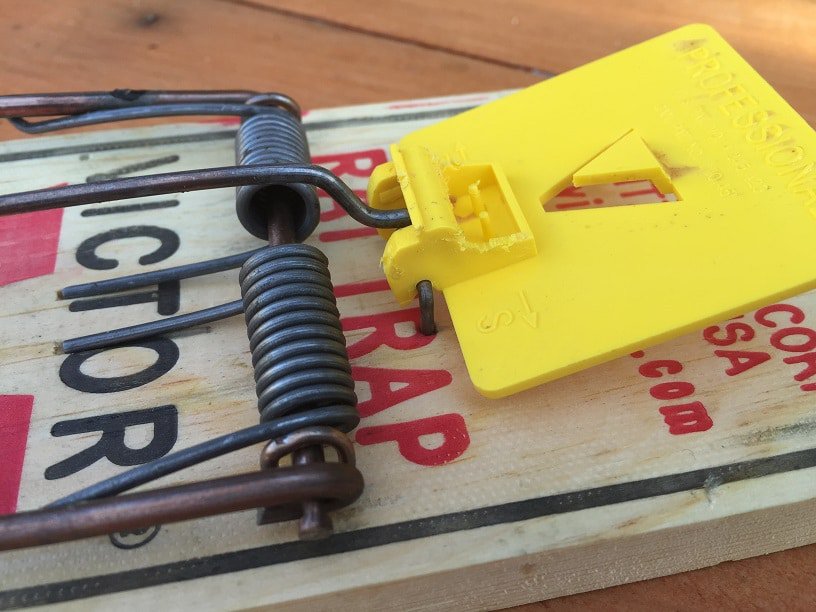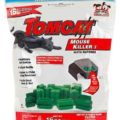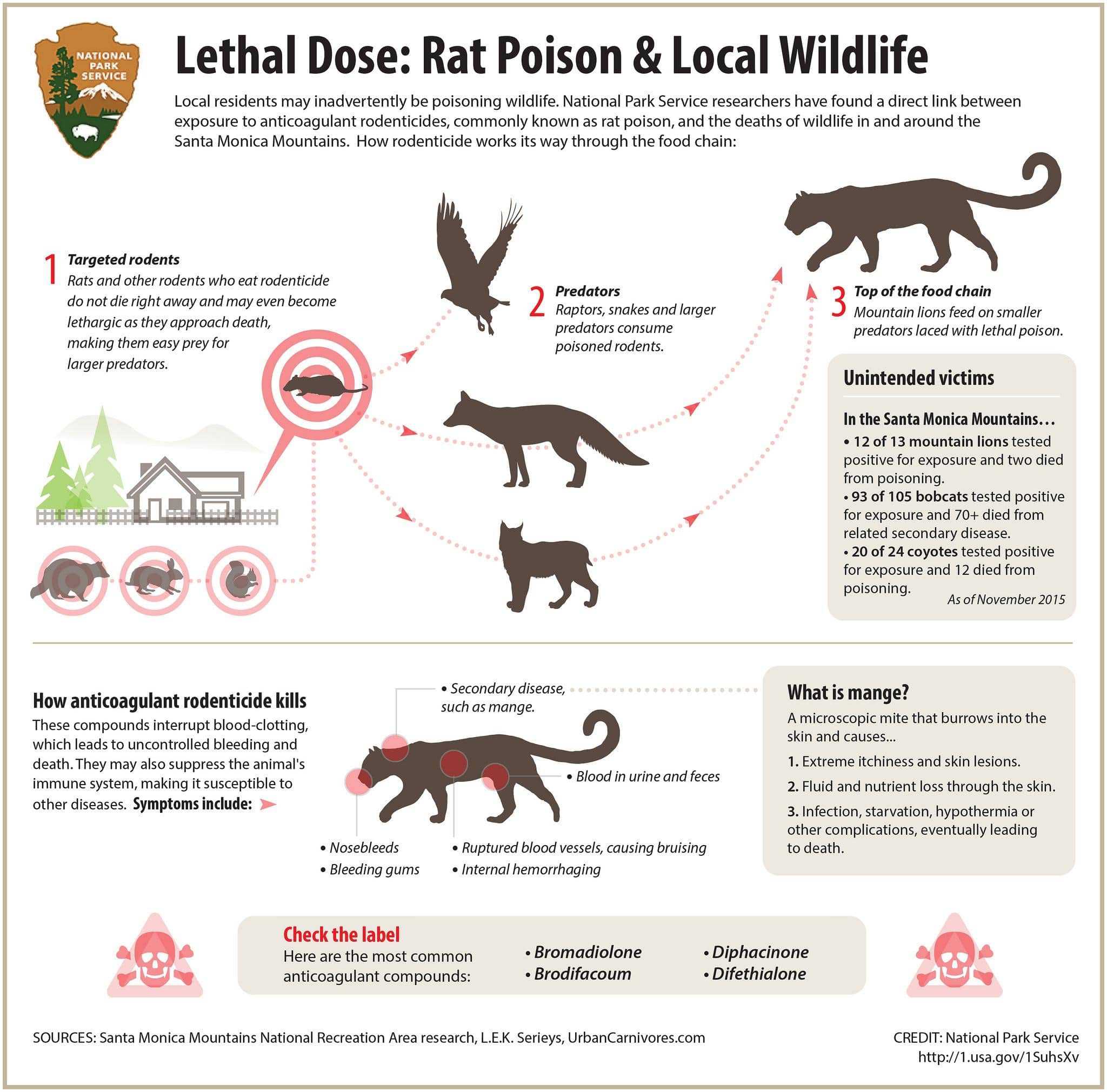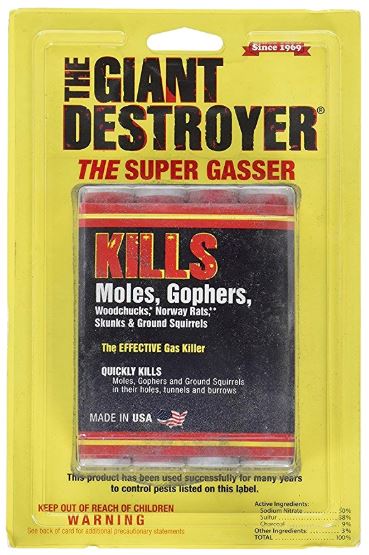Table of Contents
If you are fighting a rat infestation in your yard, then there are several steps you can take to win the battle. Not only can you win; but you can also do it safely without harming your pets.
Here are the three, easy-to-follow steps for “How to Get Rid of Rats Outside”.
3 Steps To Get Rid Of Rats
Step #1: Practice Good Sanitation And Make Your Yard Less Attractive to Rats
If you have a habit of leaving large, unattended piles of grass clippings, discarded foliage, compost, or other organic material throughout your yard, it might be time to start cleaning it up.
Rats love to nest in thick, dense concentrations of sticks, roots, dirt, and anything else that can provide shelter and insulation. If it’s not realistic to relocate or remove the random waste (organic or not) from your backyard, consider putting it into bins that are suitable for outdoor storage.
Step #2: Set Multiple Outdoor Rat Traps
Rat traps come in all kinds of shapes, sizes, and price ranges. Less expensive rat traps may require more maintenance, as they’re often designed to only catch one or two rats at a time. Exercise extreme caution when baiting and setting a rat trap, and try to place the trap in an area where the rats are most likely to visit during their ‘active’ hours, which are typically at night.
Outdoor Rat Traps Are Effective
Need some information on the best outdoor rat traps to use? Check out this article, where you can learn about the Havahart Live Trap, the Walk The Plank Bucket Trap, and the Spinning Log Bucket Trap, each of which have its own pros and cons and definitely effective in killing rats outdoors.
It’s advisable to not use glue-based rat traps for outdoor applications. The reason for this is that they are very inhumane, as rats that are caught in glue traps die a slow, agonizing death. They’re so inhumane that they’re actually outlawed in other parts of the world.
Generally speaking, it’s not advisable to use just any rat poison for an outdoor rat problem, as some of these substances can be consumed by other animals and can seep into the soil, causing environmental contamination. This leads us to…
Step #3: Use Pet Safe Rat Poisons
Many rat poisons are formulated in a way that makes them safe for household pets. Warfarin is the main ingredient in many rat poisons—it’s a substance that stops a rat’s blood from coagulating. Warfarin is relatively safe for pets to consume in small to moderate amounts.
However, some older rat poisons contain Strychnine, which is now illegal to include in most commercially available rat poisons. Just to be sure, check the label of any rat poison you’re considering using.
To learn more about which rat poisons are safe for dogs, go here and find out about RatX, a dog-safe rat poison that ingeniously uses dehydration to wither the rat away from the inside out.
In addition to using pet-friendly rat poisons, also consider using a Tier 1 bait station, which is uniquely designed to be child-proof and resistant to dog chewing.
Are you dealing with rats that burrow into the ground? This is a problem that can sometimes be remedied through the use of dry ice. Learn more about this practice by visiting this article.
Make The Outdoor Area Less Attractive To Rats
In order to thwart rats, you need to think like a rat. What are they attracted to? What provides them with an easy, accessible source of water and/or food? What areas of the yard are obscured by dense bushes, woodpiles, or other debris?
Answers to these questions will help you formulate a plan to defend your yard against rat infestations. According to the Center for Disease Control, here are a few tips that may help:
- Use Strong, Secure Trash Containers. Select trash containers that are ideally constructed of metal, not plastic, as rats can easily chew through virtually anything made out of plastic. If possible, place outdoor trash in a closed, sealed container.
- Pick Up the Dog Poop. Fun fact: rats commonly consume feces—even their own! What we see as dog poop a rat may well see as a meal. Clean up your dog messes and you’ll remove more of the food source the rats need to survive.
- Put Away the Bird Seed. Bird seed that is stored in a bird feeder hanging from a tree? No problem. Bird seed that is sitting in an old, plastic bag in your yard? That’s a feast for rats. Relocate it to reduce the allure of your yard for rats.
- Clean the Grease Tray On Your Grill. This is one of the most commonly overlooked things that you can do to stop rats. Use a high-quality degreaser to make sure your grill doesn’t smell like a rat’s dream meal.
- Clear Away Brush Piles. It’s tempting to let old, dead leaves, sticks, or branches accumulate in your yard. But, these piles make for perfect rat nests. Dispose of them.
- Work With Your Neighbors As Needed. Occasionally, rats can migrate from one building to the next without any regard for fences or property lines. Work with your neighbors to come up with a unified strategy to dispel the rat plague.
Repellents Are Of Limited Use
If you want to get rid of mosquitos, you may use a mosquito repellant. The same could be said for fleas and ticks. However, there is no repellant on the market that will make an existing rat suddenly pack up and leave when it comes to rats.
In the best-case scenario, the best rat repellants might temporarily keep new rats from coming in. But, they’re not going to do much if anything to oust the rats that have already established a home and sometimes are reported to have unwanted side effects.
The best rat repellent is a yard or outdoor space that has been treated to remove ‘rat attractors’ like the wood piles, bird seed bags, and other items mentioned above.
Conclusion
An outdoor rat problem doesn’t have to ruin your backyard. There are steps you can take to fortify your home or commercial building, making it less attractive to rats.
By following the steps outlined in this article and by using the right baits, traps, and poisons, you can make significant progress in your battle against outdoor rats.





